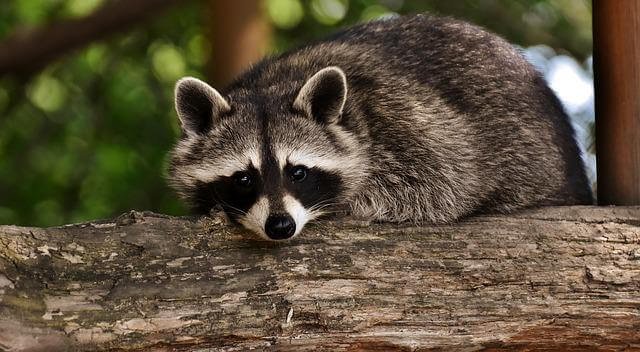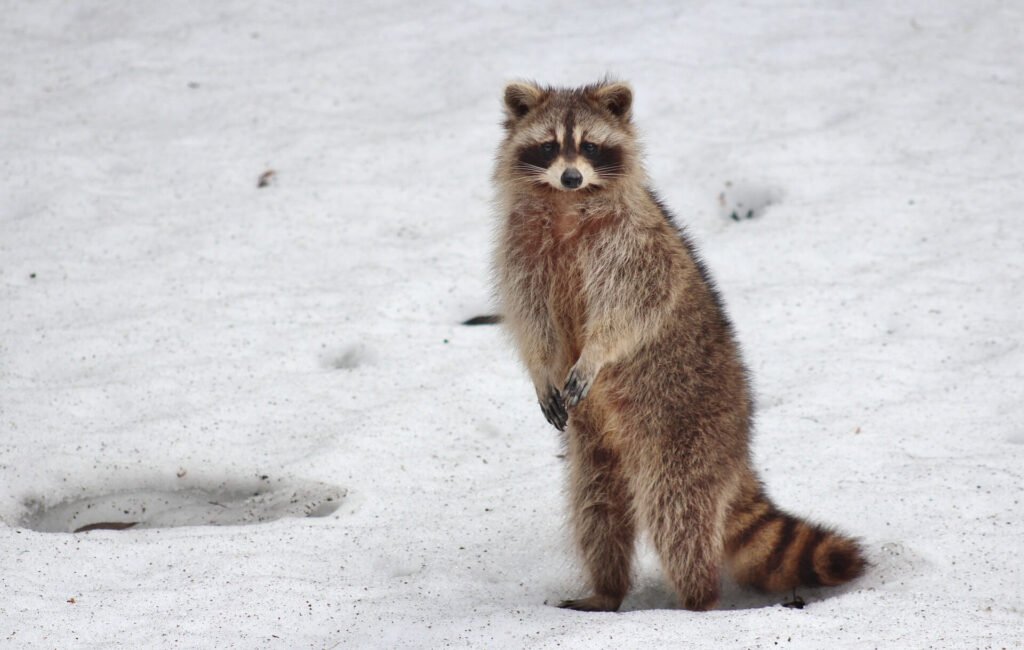Raccoon diet: What do raccoons eat in the wild?
Raccoons are omnivores, and they will pretty much eat anything. They primarily feed on plants and animals but also enjoy a wide variety of human foods. In urban areas, raccoons often scavenge through garbage cans for food scraps or pet food left outside overnight.
A typical diet for a raccoon in the wild includes berries, nuts, insects (such as crickets), frogs and other amphibians, birds’ eggs, and nestlings; small mammals such as mice; reptiles such as snakes; fish including catfish and carp; earthworms; crustaceans such as crabs and crayfish; carrion (dead animals); acorns from oak trees in autumn when available.
Fat Raccoons
These creatures are known for their intelligence and talent, which they use to get into your garbage cans or raid your bird feeder. But what many people don’t know is that these mammals also have an insatiable appetite for junk food! And that’s why being such an intelligent omnivore has a negative side – they get fat, because they know exactly where and how to get leftover junk food.

Raccoons And Rabies
Raccoons are, along with bats, skunks, and foxes, the most common rabies carriers in North America. They are also known to carry other diseases such as canine distemper, roundworm, and leptospirosis. There are, however, only between 1 and 3 cases of rabies reported annually in the US.
Are raccoons dangerous?
Raccoons are nocturnal animals that live in the wild. They are known to be very intelligent and can adapt to different environments, but they might carry rabies. If you see one outside of its natural habitat, it is best not to approach it or feed it. It is important for people who come into contact with raccoons to wash their hands thoroughly afterward.
Raccoons are not rodents.
They are actually in the Procyonidae family along with animals like coatis, kinkajous, olingos, olinguitos, ringtails, cacomistles and belong to the Carnivora order, meaning a racoon is a meat-eater and will eat anything available with voracity. This animal can be pretty cute in appearance but make no mistakes. Inside its furry exterior is a beast

that will rip apart your garbage cans for any junk food they can find.
Raccoon Habitat
They don't make good pets
Even if they are as cute and cuddly as a teddy bear, raccoons don’t make good pets. They’re hard to tame and rarely follow commands. Being curious and intelligent animals makes them perfectly capable of opening doors, jars, and even bottles. They can become very aggressive during the mating season. Even though raccoons are omnivores, feeding commercial cat foods only might cause obesity and diseases.
Raccoon Hands Are different.
They have hyper-sensitive front paws and can gather information about things just by touching them. This comes in handy when trying to find food underwater, in a stream or pond.
Raccoon Lifespan
In captivity, they can get 20 years old.
But life ain’t easy if you’re a raccoon living in the wild. Traffic, hunting, weather, diseases, and predators reduce their lifespan to 2-3 years.
Raccoon Fights Are Not Uncommon
The life of a raccoon is one filled with many dangers. These animals attempt to protect themselves from danger by fighting when necessary; however, if they’re not willing to fight against their opponent, they may be forced into it. For example, suppose they come across an animal that’s larger and more dominant than them. In that case, the smaller raccoon will likely have to stay and defend itself to get some resources in another raccoons habitat such as food, water, or nesting sites. In that case, it must fight for what it needs- even if it means fighting until death!
